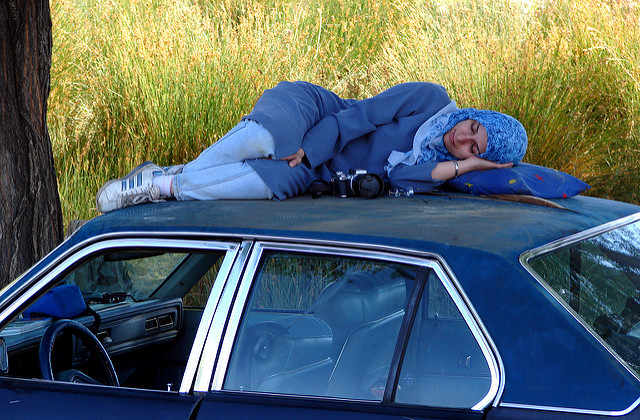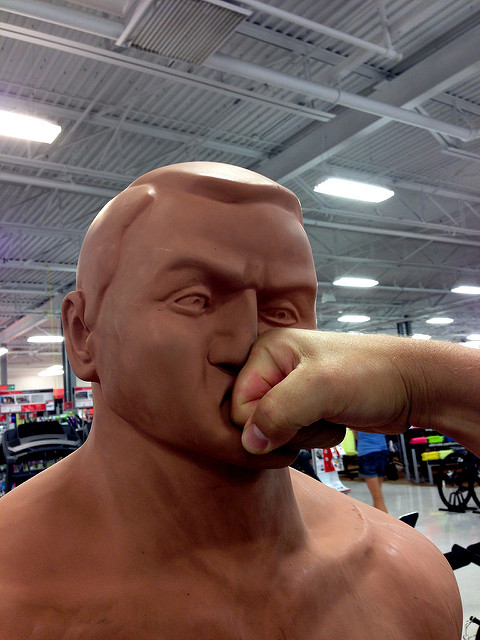Archive for July, 2018
Is your tank empty?
 Sometimes your energy level runs low. That’s not a bad thing, it’s just how things go. Just like a car’s gas tank runs low, our gas tanks, both physical and emotional, also need filling. Again, not a bad thing. That’s what gas tanks are for – they hold the fuel.
Sometimes your energy level runs low. That’s not a bad thing, it’s just how things go. Just like a car’s gas tank runs low, our gas tanks, both physical and emotional, also need filling. Again, not a bad thing. That’s what gas tanks are for – they hold the fuel.
We’re pretty good at remembering that a car’s tank is finite. At the start of the morning commute, the car’s fuel gauge gives a clear reading of the fuel level and we do the calculation to determine if we can make it or we need to stop for fuel. And we do the same thing in the evening – look at the gauge, determine if we need fuel and act accordingly. Rarely we run the car out of fuel because the car continuously monitors and displays the fuel level and we know there are consequences if we run out of fuel.
We’re not so good at remembering our personal tanks are finite. At the start of the day, there are no objective fuel gauges to display our internal fuel levels. The only calculation we make – if we can make it out of bed we have enough fuel for the day. We need to do better than that.
Our bodies do have fuel gages of sorts. When our fuel is low we can be irritable, we can have poor concentration, we can be easily distracted. Though these gages are challenging to see and difficult to interpret, they can be used effectively if we slow down and be in our bodies. The most troubling part has nothing to do with our internal fuel gages. Most troubling is we fail to respect their low fuel warnings even when we do recognize them. It’s like we don’t acknowledge our tanks are finite.
We don’t think our cars are flawed because their fuel tanks run low as we drive. Yet, we see the finite nature of our internal fuel tanks as a sign of weakness. Why is that? Rationally, we know all fuel tanks are finite and their fuel level drops with activity. But, in the moment, when are tanks are low, we think something is wrong with us, we think we’re not whole, we think less of ourselves.
When your tank is low, don’t curse, don’t blame, don’t feel sorry and don’t judge. It’s okay. That’s what tanks do.
A simple rule for all empty tanks – put fuel in them.
Image credit – Hamed Saber
Is your work meaningful?
 Life’s too short to work on things that don’t make a difference. Sure, you’ve got to earn a living, but what kind of living is it if all you’re doing is paying for food and a mortgage? How do others benefit from your work? How does the planet benefit from your work? How is the world a better place because of your work? How are you a better person because of your work?
Life’s too short to work on things that don’t make a difference. Sure, you’ve got to earn a living, but what kind of living is it if all you’re doing is paying for food and a mortgage? How do others benefit from your work? How does the planet benefit from your work? How is the world a better place because of your work? How are you a better person because of your work?
When you’re done with your career, what will you say about it? Did you work at a job because you were afraid to leave? Did you stay because of loss aversion? Did you block yourself from another opportunity because of a lack of confidence? Or, did you stay in the right place for the right reasons?
If there’s no discomfort, there’s no growth, even if you’re super good at what you do. Discomfort is the tell-tale sign the work is new. And without newness, you’re simply turning the crank. It may be a profitable crank, but it’s the same old crank, none the less. If you’ve turned the crank for the last five years, what excitement can come from turning it a sixth? Even if you’re earning a great living, is it really all that great?
Maybe work isn’t supposed to be a source of meaning. I accept that. But, a life without meaning – that’s not for me. If not from work, do you have a source of meaning? Do you have something that makes you feel whole? Do you have something that causes you to pole vault out of bed? Sure, you provide for your family, but it’s also important to provide meaning for yourself. It’s not sustainable to provide for others at your own expense.
Your work may have meaning, but you may be moving too quickly to notice. Stop, take a breath and close your eyes. Visualize the people you work with. Do they make you smile? Do you remember doing something with them that brought you joy? How about doing something for them – any happiness there? How about when you visualize your customers? Do you they appreciate what you do for them? Do you appreciate their appreciation? Even if there’s no meaning in the work, there can be great meaning from doing it with people that matter.
Running away from a job won’t solve anything; but wandering toward something meaningful can make a big difference. Before you make a change, look for meaning in what you have. Challenge yourself every day to say something positive to someone you care about and do something nice for someone you don’t know all that well. Try it for a month, or even a week.
Who knows, you may find meaning that was hiding just under the surface. Or, you may even create something special for yourself and the special people around you.
Image credit – Greg
Your response is your responsibility.
 If you don’t want to go to work in the morning, there’s a reason. If’ you/re angry with how things go, there’s a reason. And if you you’re sad because of the way that people treat you, there’s a reason. But the reason has nothing to do with your work, how things are going or how people treat you. The reason has everything to do with your ego.
If you don’t want to go to work in the morning, there’s a reason. If’ you/re angry with how things go, there’s a reason. And if you you’re sad because of the way that people treat you, there’s a reason. But the reason has nothing to do with your work, how things are going or how people treat you. The reason has everything to do with your ego.
And your ego has everything to do with what you think of yourself and the identity you attach to yourself. If you don’t want to go to work, it’s because you don’t like what your work says about you or your image of your self. If you are angry with how things go, it’s because how things go says something about you that you don’t like. And if you’re sad about how people treat you, it’s because you think they may be right and you don’t like what that says about you.
The work is not responsible for your dislike of it. How things go is not responsible for your anger. And people that treat you badly are not responsible for your sadness. Your dislike is your responsibility, your anger is your responsibility and your sadness is your responsibility. And that’s because your response is your responsibility.
Don’t blame the work. Instead, look inside to understand how the work cuts against the grain of who you think you are. Don’t blame the things for going as they go. Instead, look inside to understand why those things don’t fit with your self-image. Don’t blame the people for how they treat you. Instead, look inside to understand why you think they may be right.
It’s easy to look outside and assign blame for your response. It’s the work’s fault, it’s the things’ fault, and it’s the people’s fault. But when you take responsibility for your response, when you own it, work gets better, things go better and people treat you better. Put simply, you take away their power to control how you feel and things get better.
And if work doesn’t get better, things don’t go better and people don’t treat you better, not to worry. Their responses are their responsibility.
Image credit Mrs. Gemstone
Situational Awareness (Winter is Coming)
 Business and life are all about choosing how you want to allocate your time and money. In life, it’s your personal time and money and in business it’s the company’s.
Business and life are all about choosing how you want to allocate your time and money. In life, it’s your personal time and money and in business it’s the company’s.
If you’ve ever done any winter hiking, you know that it’s important to know the terrain. If there’s a mountain in the way, you either go over it or around it. But there is one thing you can’t do is pretend it’s not there. If you go around it, you’ve got to make sure you have enough energy, food, water and daylight to make the long trek to shelter. If you go over it, you’ve got to make sure you have the ice picks, crampons, down jackets and climbing skills to make it up and down to shelter. With winter hiking, the territory, gear and team capability matter. And the right decision is defined by situational awareness.
And what of the shelter? Does it sleep five, six or seven? And because you have seven on your team, it’s not really shelter if it sleeps five. And if you don’t know how many it sleeps, you’re not situationally aware. And if you’re not situationally aware, on five may fit in the shelter and two will freeze to death. Maybe before your trip you should look at the map and learn all the shelters their locations and how many the can hold. The right action and the safety of your crew depends on your situational awareness.
And the decision depends on how much daylight do you have left. Before you left basecamp it was possible to know when the sun will set. Did you take the time to look at the charts? Did you take advantage of the knowledge? If you don’t have enough sunlight, you’ve got to go over the top. If you do, you can take the leisurely great circle route around the mountain. And if you don’t know, you’ve got to roll the dice. I’d prefer to be aware of the situation and keep the dice in my pocket. And for that, you need to be aware of the situation.
Winter hiking is difficult enough even when you have maps of the terrain, weather forecasts, locations of the shelters and knowledge of when the sun will set. But it’s an unsafe activity when there are no maps of the territory, the weather is unknown and there’s no knowledge of the shelters. But that’s just how it is with innovation – the territory has never been hiked, no maps, no weather forecast, and shelters are unknown. With innovation, there’s no situational awareness unless you create it. And that’s why with innovation, the first step is to create the maps. No maps, no possibility of situational awareness.
The best people at situational awareness are the military. The know maps and they know how to use them. The know to do recon to position the enemy on the map and they know to use the situational awareness (the map, the enemy’s location, and their direction of travel) to decide how what to do. If the enemy’s force is small and in poorly defensible position, there are a certain set of actions that are viable. If the enemy force is large and has the high ground, it’s time to sit tight or retreat with dignity. (To be clear, I’m a pacifist and this military example does mean I condone violence of any kind. It’s just that the military is super good at situational awareness.)
If you’re not making maps of the competitive landscape, you’re doing it wrong. If you’re not moving resources around and speculating how the competition will respond based on the topography and your position within it, you’re not sharpening your situational awareness and you’re not taking full advantage of the information around you. If you don’t know where the mountains are you can’t avoid them or use them to slow your competition. And if you don’t know know where the shelters are an how many miles you can hike in a day, you don’t know if you’re overextending your position and putting your crew at risk.
Winter is coming. If you’re not creating maps to build situational awareness, what are you doing?
Image credit – Martin Fisch
 Mike Shipulski
Mike Shipulski